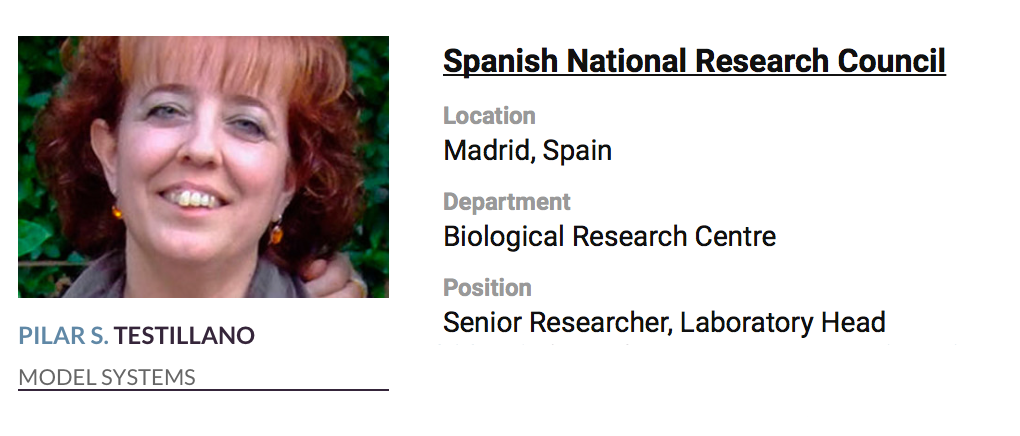博文
J EXP BOT:自噬参与大麦小孢子胚胎发生过程中的细胞死亡
||
Autophagy is activated and involved in cell death with participation of cathepsins during stress-induced microspore embryogenesis in barley
Microspores (小孢子) are reprogrammed towards embryogenesis by stress. Many microspores die after this stress, limiting the efficiency of microspore embryogenesis. Autophagy (自噬) is a degradation pathway (降解途径) that plays critical roles in stress response and cell death. In animals, cathepsins (组织蛋白酶) have an integral role in autophagy by degrading autophagic material; less is known in plants. Plant cathepsins are papain-like (类木瓜蛋白酶) C1A cysteine proteases (半胱氨酸蛋白水解酶) involved in many physiological processes (生理过程), including programmed cell death. We have analysed the involvement of autophagy in cell death, in relation to cathepsin activation, during stress-induced microspore embryogenesis in Hordeum vulgare (大麦). After stress, reactive oxygen species (ROS) and cell death increased and autophagy was activated, including HvATG5 and HvATG6 up-regulation and increase of ATG5, ATG8, and autophagosomes (自噬体). Concomitantly (并发地), cathepsin L/F-, B-, and H-like activities were induced, cathepsin-like genes HvPap-1 and HvPap-6 were up-regulated, and HvPap-1, HvPap-6, and HvPap-19 proteins increased and localized in the cytoplasm (细胞质), resembling (类似) autophagy structures. Inhibitors of autophagy and cysteine proteases reduced cell death and promoted embryogenesis. The findings reveal a role for autophagy in stress-induced cell death during microspore embryogenesis, and the participation (参与) of cathepsins. Similar patterns of activation, expression, and localization suggest a possible connection between cathepsins and autophagy. The results open up new possibilities to enhance microspore embryogenesis efficiency with autophagy and/or cysteine protease modulators.
小孢子在胁迫处理下会重编程进而胚胎发生。许多小孢子在胁迫处理后会直接死亡,限制了小孢子胚胎发生的效率。自噬是一种降解途径,其在胁迫响应和细胞死亡过程中扮演重要作用。在动物中,组织蛋白酶通过降解自噬材料在自噬过程中发挥着不可或缺的作用,然而对于其在植物中的作用还不清楚。植物的组织蛋白酶是一类类木瓜蛋白酶C1A半胱氨酸蛋白水解酶,该类酶参与许多的生理过程,包括程序性细胞死亡。本文分析了大麦小孢子在胁迫诱导下胚胎发生过程中自噬参与细胞死亡及与组织蛋白酶激活相关的过程。在胁迫处理后,活性氧物质和细胞死亡增加,并且自噬被激活,HvATG5和HvATG6基因上调表达,ATG5、ATG8和自噬体含量增加。同时,组织蛋白酶L/F、 B、和H类活性被诱导,组织蛋白酶类基因HvPap-1和HvPap-6上调表达,并且HvPap-1、HvPap-6和HvPap-19蛋白含量增加,定位于细胞质,类似于自噬结构。抑制自噬和组织蛋白酶会减少细胞死亡,同时促进胚胎发生。这些发现揭示了小孢子胚胎发生过程中自噬在胁迫诱导的细胞死亡中的作用,并且组织蛋白酶参与了这个过程。组织蛋白酶和自噬相似的激活、表达和定位模式表明这两者可能存在某种关联。本文的结果发现了通过自噬和组织蛋白酶的调节增强小孢子胚胎发生的新的可能性。
通讯:Pilar S. Testillano (http://autofagia.org/project/pilar-s-testillano/)
doi: https://doi.org/10.1093/jxb/erx455
https://blog.sciencenet.cn/blog-3158122-1094246.html
上一篇:the plant journal:比较表观组揭示土豆和番茄复制基因演化
下一篇:Nature Plants:顺式调控元件遗传变异引起山字草花斑位置的改变
全部作者的其他最新博文
- • Plant Physiology:CsMADS3促进柑果中的叶绿素降解和类胡萝卜素合成(华中农业大学)
- • Molecular Plant:LBD11-ROS反馈调节作用于拟南芥的维管形成层增殖和次生生长(浦项科技大学)
- • Science Advances:根结线虫通过调控植物的CLE3-CLV1模块,促进侵染进程(日本熊本大学)
- • Nature Communications:油菜素内酯参与植物营养生长期转变的分子机制解析(浙江农林大学)
- • Current Biology:光合作用产生的蔗糖驱动侧根“生物钟”(德国弗莱堡大学)
- • PNAS:花同源异型基因在叶中被抑制、花中被激活的分子机制(南卡罗来纳大学)

